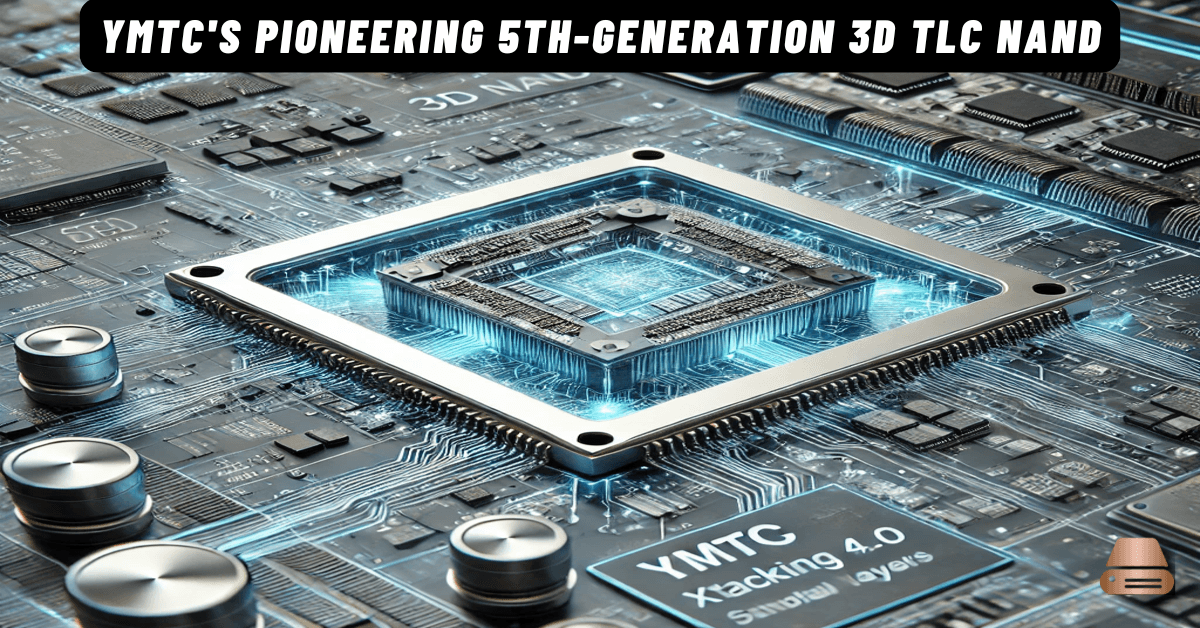Yangtze Memory Technologies Co. (YMTC) has recently commenced shipments of its groundbreaking Triple-Level Cell 5th-generation 3D TLC NAND flash memory. This development signifies a substantial leap in storage technology, positioning YMTC at the forefront of the global NAND flash industry.
Technological Advancements in YMTC’s 5th-Generation 3D TLC NAND
Layer Density and Architecture
YMTC’s latest 3D TLC NAND features an impressive 294 total layers, with 232 active layers dedicated to data storage. This architecture not only enhances storage capacity but also improves data transfer rates and overall performance. The utilization of YMTC’s proprietary Xtacking 4.0 architecture facilitates efficient stacking of memory cells, resulting in higher storage densities and faster access times.
Xtacking 4.0: Revolutionizing NAND Flash Design
The Xtacking 4.0 architecture represents a significant evolution in NAND flash design. By separating the peripheral circuitry and memory cell arrays into two distinct wafers and subsequently bonding them, YMTC achieves greater manufacturing efficiency and performance optimization. This approach allows for:
- Increased I/O Speed: Enhanced data transfer rates due to optimized signal paths.
- Higher Storage Density: More efficient use of silicon real estate, leading to greater storage capacities.
- Improved Production Yields: Simplified manufacturing processes result in higher yields and reduced costs.
Performance Metrics
The 5th-generation 3D TLC NAND delivers notable performance improvements, including:
- Data Transfer Rate: Achieving speeds up to 2400 MT/s, catering to the demands of high-performance computing applications.
- Storage Efficiency: A recording density of 19.8 Gbit/mm², setting a new benchmark in the industry.
- Energy Efficiency: Optimized power consumption profiles, making it suitable for energy-sensitive applications.
Implications of U.S. Sanctions on YMTC
Despite being placed on the U.S. Commerce Department’s Entity List, YMTC has demonstrated resilience by advancing its technology and commencing shipments of its latest NAND products. The sanctions have posed challenges, particularly in procuring advanced semiconductor manufacturing equipment. However, YMTC’s progress suggests effective strategies to mitigate these obstacles and maintain competitiveness in the global market.
Market Impact and Future Prospects
YMTC’s entry into the market with its 5th-generation 3D TLC NAND is poised to influence the competitive landscape significantly. The company’s advancements may prompt other industry players to accelerate their technological developments. Looking ahead, YMTC’s focus appears to be on:
- Scaling Production: Increasing manufacturing capabilities to meet global demand.
- Technological Innovation: Continuing research and development to further enhance NAND flash performance and storage capacities.
- Strategic Partnerships: Forming alliances to navigate geopolitical challenges and expand market reach.
Conclusion
YMTC’s successful development and shipment of its 5th-generation 3D TLC NAND flash memory underscore its position as a leader in storage technology innovation. The company’s advancements in layer density, architectural design, and performance metrics highlight its commitment to pushing the boundaries of what is possible in NAND flash memory. As YMTC continues to navigate industry challenges and drive technological progress, it is set to play a pivotal role in shaping the future of data storage solutions.
What is 3D TLC NAND?
3D TLC NAND is a type of flash memory that stacks multiple layers of memory cells vertically to increase storage density and reduce costs. TLC (Triple-Level Cell) NAND stores three bits of data per cell, balancing performance and affordability.
What makes YMTC’s 5th-generation NAND unique?
YMTC’s 5th-generation NAND utilizes 294 total layers, including 232 active layers, and the proprietary Xtacking 4.0 architecture. These advancements result in higher storage density, faster data transfer rates, and improved energy efficiency.
